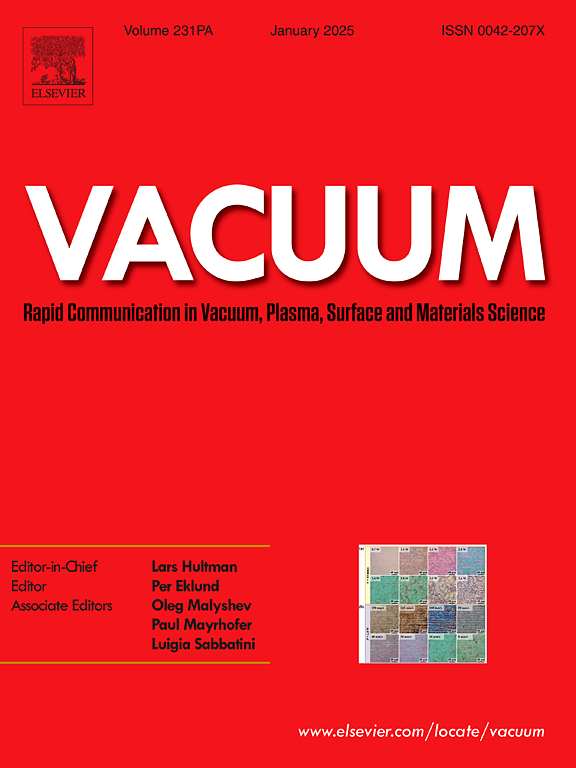Effects of crystal structure and surface roughness in sputtering of metals by Ar ions
IF 3.8
2区 材料科学
Q2 MATERIALS SCIENCE, MULTIDISCIPLINARY
引用次数: 0
Abstract
The sputtering of amorphous and crystalline Ni targets by normally incident 0.1–100 keV Ar ions was studied using binary collision simulation. The work was motivated by the fact that for some materials, including nickel, the measured sputtering yields may differ significantly from those calculated for amorphous targets. Taking into account the available experimental data, sputtering by 30 keV Ar ions was studied in detail. Calculations were performed for both flat and rough surfaces using several interatomic potentials. It was assumed that the surface relief has a tooth-like shape observed experimentally. Agreement with the measured sputtering yields was found for the ZBL and Kr-C potentials, while the Zinoviev potential led to a noticeable discrepancy. The main effect of the crystal structure is associated with sputtering due to linear collision sequences (LCS). This is also confirmed by calculations for some other polycrystalline metal targets considered for comparison.
氩离子溅射金属时晶体结构和表面粗糙度的影响
采用二元碰撞模拟的方法,研究了0.1 ~ 100 keV氩离子对非晶和结晶Ni靶的溅射。这项工作的动机是,对于一些材料,包括镍,测量的溅射产量可能与非晶态目标的计算结果有很大不同。结合已有的实验数据,对30 keV氩离子的溅射进行了详细的研究。用几个原子间电位对平面和粗糙表面进行了计算。假设实验观察到的表面起伏具有齿状。ZBL电位和k - c电位与溅射产量的测量值一致,而Zinoviev电位导致了明显的差异。晶体结构的主要影响与线性碰撞序列(LCS)引起的溅射有关。这也被用于比较的其他一些多晶金属靶的计算所证实。
本文章由计算机程序翻译,如有差异,请以英文原文为准。
求助全文
约1分钟内获得全文
求助全文
来源期刊

Vacuum
工程技术-材料科学:综合
CiteScore
6.80
自引率
17.50%
发文量
0
审稿时长
34 days
期刊介绍:
Vacuum is an international rapid publications journal with a focus on short communication. All papers are peer-reviewed, with the review process for short communication geared towards very fast turnaround times. The journal also published full research papers, thematic issues and selected papers from leading conferences.
A report in Vacuum should represent a major advance in an area that involves a controlled environment at pressures of one atmosphere or below.
The scope of the journal includes:
1. Vacuum; original developments in vacuum pumping and instrumentation, vacuum measurement, vacuum gas dynamics, gas-surface interactions, surface treatment for UHV applications and low outgassing, vacuum melting, sintering, and vacuum metrology. Technology and solutions for large-scale facilities (e.g., particle accelerators and fusion devices). New instrumentation ( e.g., detectors and electron microscopes).
2. Plasma science; advances in PVD, CVD, plasma-assisted CVD, ion sources, deposition processes and analysis.
3. Surface science; surface engineering, surface chemistry, surface analysis, crystal growth, ion-surface interactions and etching, nanometer-scale processing, surface modification.
4. Materials science; novel functional or structural materials. Metals, ceramics, and polymers. Experiments, simulations, and modelling for understanding structure-property relationships. Thin films and coatings. Nanostructures and ion implantation.
 求助内容:
求助内容: 应助结果提醒方式:
应助结果提醒方式:


